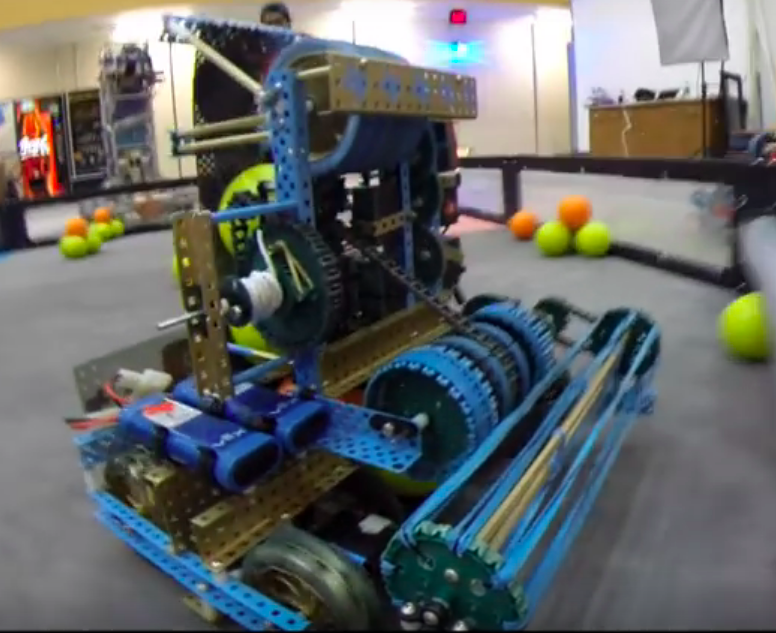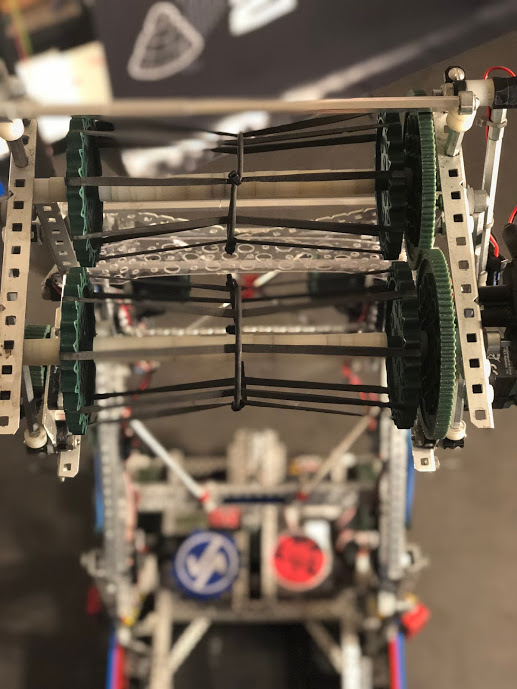At first glance, it may be hard to understand why rubber bands are so useful. You never pay them mind when you see them holding things together in a drawer somewhere, after all. But taking a look at the past 4 years of VEX world champions, no matter the game, rubber bands have been used.
Rubber bands are a hard concept to grasp (or at least they were for me) because they're useful for so many things. In this article, I will be discussing three main uses for rubber bands:
Rubber bands for deploying
The first use for rubber bands is to deploy extensions from your robot that otherwise would not fit in size. Take for example Singapore organization's 8059's Tower Takeover robot:
This robot not only has its intake rollers deploy out to the front of the robot from the center, it also uses rubber bands to deploy a second stage of its tray. This allows them to score stacks of 6 cubes compared to 3, which is a major improvement and contributed to their finals placement at SingVex 2019.
Rubber bands for intaking
Rubber bands have two unique properties that make them perfect for intakes: they not only will stretch to the shortest distance they can, they also have a surface that has a noticable amount of friction. This means that for the purposes of intaking game objects, rubber band rollers are an option that should be at least considered if not used.

Discobots' 2016 Worlds robot features a rubber band roller at the front for intaking balls.
Typically, roller intakes are used for round objects, such as the balls of Nothing But Net and Turning Point. However, they aren't just useful for intaking balls. In the Zone's "goliath" intakes were very prevalent and used rubber band rollers zip tied to an hourglass shape in order to intake cones. The rubber band rollers of Turning Point did an excellent job at flipping grounded caps when simply reversed as well.

929U's Division Champion In the Zone robot used an intake with rubber bands to intake cones.
Rubber bands for lift assisting
Most VEX games involve having some sort of raising action, which can be accomplished using some sort of lift. However, sometimes motor power alone isn't enough to raise the lift with the load required at the speed you'd like. The contracting force or rubber bands is a massive boon here, allowing motors to be used elsewhere but reaching approximately the same lifting power.
All types of lifts can be rubber banded, however, in this article, I will show a simple example of one of the more common types of rubber banding, that being the rubber banding on a reverse double four bar.
The general principle behind rubber bands on lifts is that you want the rubber band to contract as your lift raises. One of the simplest ways to do this is to construct a triangle out of rubber bands that spans across the two parallel bars of the reverse double four bar (2 points on one bar, 1 point on the other). You will want to find the three points which come closer together as the lift is raised and spread further apart as the lift is lowered. This can be done by simple observation while the lift is being raised by hand. You will then want to stretch your rubber bands across a surface that can free spin, as the bands will want to shift as the lift goes up and having them over a fixed piece will contribute to degradation of rubber bands and a very slight performance decrease. The simplest way to do this is using pulley wheels, but custom rollers can be created for more space efficiency.

929U's In the Zone robot, showing the triangle banding on the bottom stage of the lift.
Happy banding!